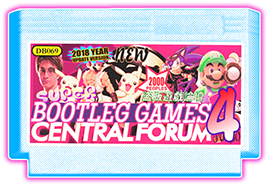OK, so we all know how most of Shenzhen Nanjing's latter games have a...
distinctive... sound to them. They're very easily identified by overuse of vibrato in the melody line and clunky-sounding percussion using the noise channel.
The interesting thing is, Nanjing's music
wasn't always like this. Based on
Gil Galad's NSF rips, the first game with this sound driver appears to be
Jin Yong Qun Xia Zhuan (NJ031); all prior games had a very different sound driver, with several of these games using the same tune heard on the menu of the OneStation 99-in-1 carts.
But here's where it gets interesting.
There are two NES Dance Dance Revolution clones with very similar music, heavy on the vibratos and noise-channel percussion: "GLK Dance", credited to a company called Feng Li, and the anonymously developed "Hot Dance 2000". They seem to be based on the same engine, and judging from the name of the latter game, they're probably around 2000-- i.e., probably predating the Nanjing games. (Nanjing's FF7 is copyrighted 2004, for instance.)
So I guess Nanjing hired the sound programmer from these games and had them do music for their RPGs. Or something.
But it gets even weirder.
In 1988, Beam Software of Australia-- yes, the same company behind the utterly infamous
Back to the Future game-- developed a cricket game for the NES titled "International Cricket". Naturally, it was PAL-only, because the only people interested in that sport were in Commonwealth countries. I only discovered its existence thanks to a pirated multicart ripped by cah4e3.
Now admittedly, I don't know much about NES assembly, and know even less about NES sound chip programming, but the music in this game sounds shockingly similar to Nanjing's stuff-- same vibrato effects, same percussion noises. If you want, you can find an NSF of it on
the HCS64 archive. (Someone who
does know more about NES programming, could you look at this to see if my suspicions are at all correct?)
So did the GLK Dance developer, and in turn Nanjing, steal their sound engine from an obscure cricket game? Because that would be a wonderfully bizarre story if it is the case.
Edit: Hm, Beam did several other sports games with the same sound driver. "Aussie Rules Footy" (another PAL-only one, naturally) and "Bo Jackson Baseball" (this one's NTSC, naturally).


